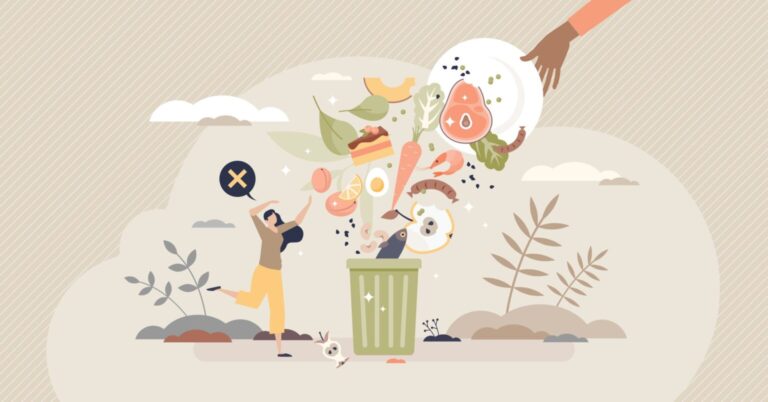
Making available an allocation of over 1.6 billion, the National Recovery and Resilience Plan (Pnrr) will also finance basic research through 14 extensive partnerships including universities, research centers and companies. Following the precepts of the Plan, the objective is not only the relaunch of the Italian research system (recovery) but also its structural strengthening in a long-term perspective (resilience). A further appreciable feature is that the program does not distribute funds one by one but indicates the areas on which research must be concentrated, along the lines of the approach followed by the European Commission with its funding programs such as Horizon Europe.
Sustainable nutrition
Among the issues indicated by the Ministry of University and Research there is also the development of models for sustainable nutrition, an area in which the project of the Onfoods foundation, coordinated by the University of Parma and made up of a partnership of 26 companies involved in the food and nutrition sector. Together with university and research institutes, private companies such as Barilla, De’ Longhi, Tecnoalimenti and Confcooperative are also involved.
“With the Partnerships – states the MIUR website – the inclusion between public and private continues also in the area of fundamental research”.
The Foundation will work to achieve six strategic objectives in line with Pnrr, Horizon Europe (the EU research programme) and the United Nations 2030 Agenda for Sustainable Development (SDGs) by operating on seven strategic directions (the “spokes”) which will cover the themes of global sustainability, intelligent and circular food and distribution system, food safety of traditional foods and novel foods, food quality and nutrition, permanent nutrition, fight against malnutrition and policies, behaviors and education. A project with ambitious and highly complex objectives, as Daniele Del Rio, full professor of Human Nutrition at the University of Parma and coordinator of the Onfoods project, explains to us.
A complex project
«Yes, the project presents a high degree of complexity and it could not be otherwise, also because the objective of the Ministry of University and Research for the Pnrr was to systematize as many high-level skills as possible on specific themes. Onfoods, for example, involves 26 organizations of excellence, both public and private, almost 350 researchers and must manage funding of 114 million euros. The challenge for us is to be able to coordinate all these realities with the greatest possible balance between the different points of view in order to pursue in the best possible way the objectives of sustainability and safety of the food supply chain that we have set for ourselves.”
In addition to the sustainability goals of the agri-food chain, which are already quite ambitious in themselves, there are also expectations regarding the strengthening of the national research network.
It is important to underline that there is also a more general objective of these partnerships: in the words of the ministry, it is about “strengthening research supply chains at national level and promoting their participation in European and global strategic value chains”. It is a fundamental strategic objective for our country, which aims to strengthen national research capacity on specific topics also in the long term, beyond the horizon of Pnrr funding. The Onfoods foundation project envisages a significant investment both in strengthening the instruments and analytical infrastructures available for research, and in expanding the number of researchers specifically trained on the project’s objectives. This “endowment” will allow a stable leap in quality in the national research system by launching projects and creating networks of skills, synergies and complementarities whose action will continue even after the three-year period of funding from the Pnrr. In this we can detect a certain difference between the national Centers – destined to remain points of reference also in the future – and the foundations, such as Onfoods, whose activity is above all to initiate partnerships, collaborations, coordinated research which can then continue independently. It is not excluded, of course, that the foundation will maintain a role in the future but it will probably be a little different.
How does it work
The partnership mechanism is very important because it guarantees continuity even for projects with relatively low Trl (the Trl, Technology readiness level, indicates the degree of maturity of a technology. The lower levels indicate studies more similar to basic research, the more high are attributed to systems close to commercialization, Ed.). In addition to launching research in partnership between the 26 entities involved, the foundation will provide funding for individual projects through calls also open to small and medium-sized businesses, startups and spinoffs. An opportunity for many innovative business ideas to find space or gain new momentum. One research direction specifically concerns the circularity of the food system, a theme that will also be at the center of the Insafe event organized in Paestum by Makinglife (20 October).
Spoke 2 (“Smart and circular food system and distribution”), led by the National Research Council, presents two key points: the first concerns the “circular” part, the recovery of agri-food production waste products. On this aspect, a difference between Onfoods and Agritech, the “National Center for the development of new technologies in agriculture” also created within the Pnrr, should be highlighted. Although the areas of expertise partially overlap – but this is inevitable – in terms of circularity Agritech is more focused on finding solutions to maintain by-products in the context of primary production, while Onfoods envisages a broader application. The objective, in fact, will be the recovery of high-value products or molecules and their reintroduction in the context of foods and supplements. However, a high level of coordination is envisaged between the two projects in order to limit overlaps and encourage synergies where they are useful to the national system. The second key point of the spoke – which mainly involves the Polytechnic of Milan – concerns smart logistics, i.e. the development of intelligent and innovative systems for the transport of food – and waste – which reduce food waste and the impact environmental of the supply chain.
What are the major obstacles to the development of solutions in the field of recovery of agri-food by-products?
Technical knowledge does not represent a critical aspect: our research centers at national level have all the necessary skills to carry out extraction, purification and characterization operations with the necessary quality, also paying due attention to environmental sustainability aspects. What is perhaps missing is precisely the coordination between the various activities and skills. So far, much research has focused on local products, mainly involving realities in the study area, for example the research centers in Sicily and Calabria may have focused on the recovery of citrus fruit waste while in Northern Italy they worked on other local products. These projects generally have few points of contact. The added value of Onfoods, in this sense, is to encourage activities with a high level of sharing, creating opportunities for contact and networks in which technologies developed by an institution are used on materials coming from distant geographical areas, producing products that can then be used experimentally by a third body again, and so on. Projects are envisaged which, with this approach, start from agri-food waste and reach the final molecule with high added value, also crossing different spokes, each for its own expertise. To give an example, a partnership centre, in the context of spoke 2, could develop an innovative and sustainable extraction process to recover useful compounds from food processing waste (or – why not? – from biomass coming from the National Agritech Center ), and then send the extraction product to spoke 3 for an evaluation of its safety and to spoke 4 for the experimental development of a functional food which is added to it and which is good, technologically sustainable and whose effect on the Health. A final step could then involve spoke 6 for an application, always experimental, of the product itself to a particular category of subjects in fragile conditions. In short, all the skills put into the system are successful.
Can events like the Insafe conference make a contribution to encouraging sharing?
Without a doubt. These are occasions in which companies from different sectors, sizes, skills and geographical areas have the opportunity to meet and discuss each other’s needs. I myself will make my contribution with an intervention to illustrate the contents of Onfoods. I believe that in the future the conference could also represent an opportunity to engage and involve smaller businesses such as small and medium-sized businesses, spinoffs and startups interested in the topic of circularity and increasing the value of waste products.
Registrations for the Insafe conference are open and it is possible to delve deeper into the purpose of the project.

